Richmond Summer Microclimate Care: Boost Plant Vitality
Ready to give your Richmond garden the tailored care it deserves? Request a personalized quote today and let us help you manage your yard's unique microclimates!
- Microclimates are small, distinct climate zones within your yard caused by sun, shade, structures, and more.
- Understanding these zones is key to plant health during hot Richmond summers.
- Tailor watering, soil care, mulching, and plant selection to each specific microclimate.
- Healthy soil and mulch help regulate temperature and moisture.
- Choose the right plant for the right spot (sun-lovers vs. shade-seekers).
Introduction: Surviving the Sizzle - Why Richmond's Summer Microclimates Matter
Phew, another Richmond summer! Ever notice how one corner of your garden seems to bake like asphalt while another stays surprisingly pleasant, even on the same scorching Ottawa day? You're not imagining things – you're experiencing microclimates! Think of them as tiny, distinct weather zones hiding right in your own yard, different from the general forecast for, say, Barrhaven or even just down the street. These mini-environments are created by everything from the shade of a big maple tree, the heat bouncing off a brick wall, the slope of your landscaping, or even differences in your soil.
So, why should your gardening efforts care about these quirky climate pockets? Because your plants certainly do! During our hot, sometimes humid summers, these microclimates can be the difference between a thriving flower bed and a crispy disappointment. A spot with intense afternoon sun exposure might stress out delicate perennials, demanding more water, while a cooler, shaded nook could be perfect for plants that wilt easily. Understanding these variations is crucial for plant vitality. Ignoring them can lead to underwatering, overwatering, or simply choosing the wrong plant for the wrong spot – a recipe for frustration!
Our goal here isn't to get you a meteorology degree, but to help you become a backyard weather detective. By learning to identify and understand the specific microclimates across your property, you can make smarter decisions about plant selection, placement, and care routines like watering. Let's unlock the secrets to keeping your Richmond garden happy, healthy, and resilient, even when the summer sizzle is on full blast!
Decoding Your Backyard: Identifying Microclimates in Richmond
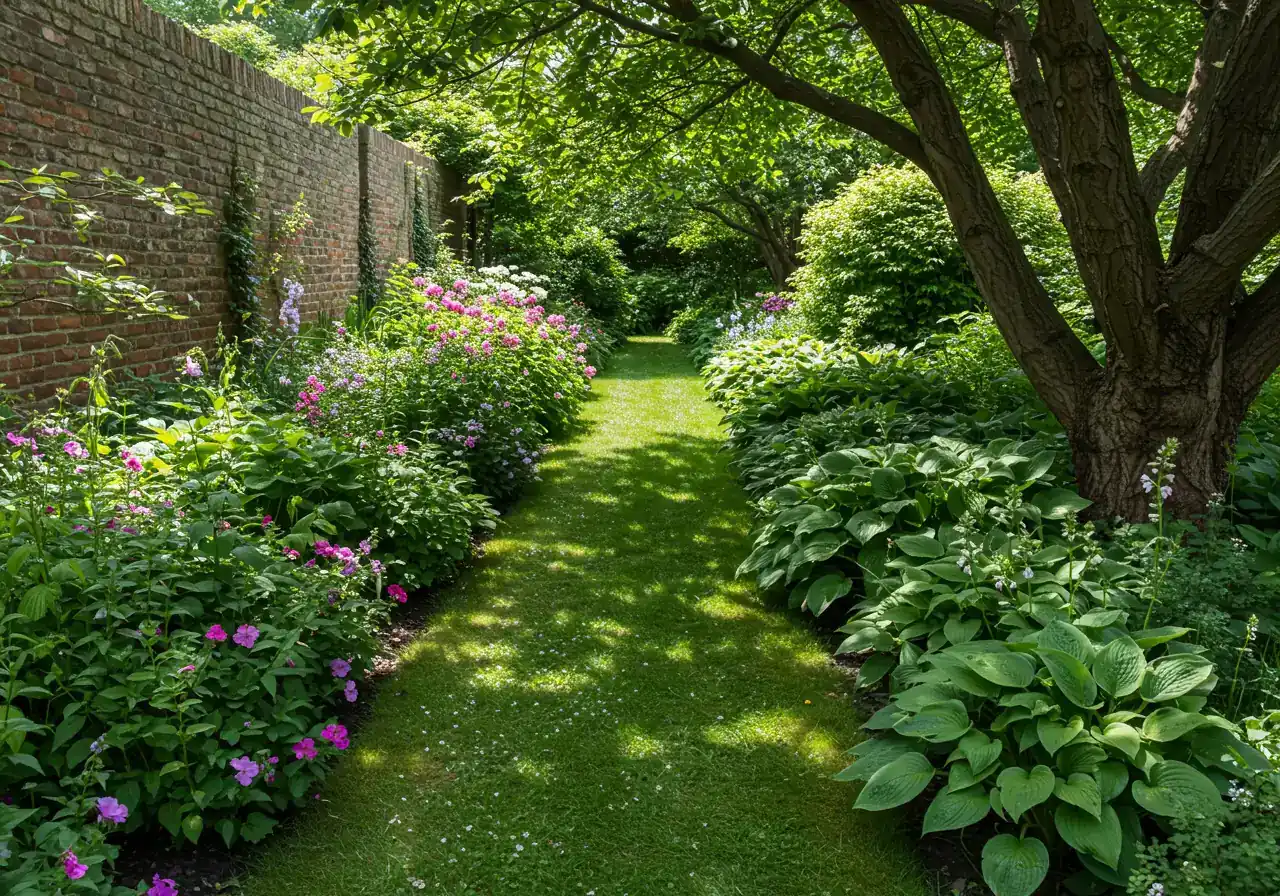
Alright, so we know why these quirky little weather pockets matter in our Richmond yards, especially during those Ottawa summers. But how do you actually figure out where they are? Think of yourself as a backyard detective – grab your metaphorical magnifying glass (or just your eyes!), and let's investigate. You don't need fancy equipment, just a bit of observation.
Your best tool is simply watching your yard throughout the day and across different seasons.
- Follow the Sun: Where does the sun hit first in the morning? Where does it linger longest in the afternoon? That south- or west-facing wall probably feels like a pizza oven by 3 PM, creating a hot and dry microclimate perfect for heat-loving plants (or pesky weeds!). Conversely, the north side of your house or garage might stay consistently cooler and shadier.
- Water Watch: After a good rain (or when the sprinklers run), where does water pool? Where does the soil dry out almost instantly? Low spots might create damp, boggy conditions, while areas near thirsty trees or pavement could be surprisingly dry. Proper water management is essential, just like managing unwanted plants as discussed in Richmond Lawn Weeds: Summer Control Tips.
- Listen to Your Plants (and Weeds!): Are certain plants thriving in one spot but struggling just a few feet away? That's a huge clue! Even noticing where certain invaders pop up can tell you something; understanding where problems occur helps with overall yard health.
So, what creates these zones? Lots of things!
- Buildings & Structures: As mentioned, walls radiate heat or cast shade. Overhangs create dry shade, which is tricky for many plants. Fences can block wind, creating sheltered pockets.
- Pavement & Hardscaping: Driveways, patios, and stone paths soak up heat all day and release it slowly, warming the surrounding area.
- Trees & Shrubs: A large maple tree creates significant shade and competes for water. Even smaller shrubs can alter ground-level temperature and moisture – knowing some Richmond Summer Shrub Pruning Tips for Healthy Gardens can help you manage the light and air reaching plants underneath. Planting new trees strategically is also key; check out these Richmond Tree Planting Tips for Healthy Growth for placement advice.
- Slope & Elevation: Even gentle slopes affect water runoff and exposure to sun and wind. Cold air tends to settle in lower spots.
- Natural Features: Being near the Jock River might offer slightly more humidity or moderate extreme temperatures compared to yards further inland, maybe differing subtly from the layouts seen in parts of Barrhaven or Greely.
Once you start noticing these patterns, you can literally sketch a simple map of your yard, marking the sunny spots, shady corners, damp areas, and windy zones. This map becomes invaluable when planning your gardening strategies or considering new Richmond Landscape Design Ideas & Plans. Understanding these mini-environments helps you choose the right plant for the right place, adjust your watering habits, and ultimately create a healthier, happier yard. And hey, if mapping microclimates feels a bit overwhelming, expert help is available through professional Services to get your landscape perfectly dialed in.
Common Microclimate Examples
| Location | Typical Conditions | Summer Impact | Care Strategy |
|---|---|---|---|
| South/West Facing Wall | Full Sun, High Heat Reflection | Very Hot, Dries Quickly | Heat/Drought Tolerant Plants, Mulch, Frequent Water Checks |
| North Side of House | Full Shade, Cooler | Consistently Moist or Dry Shade | Shade-Tolerant Plants, Check Moisture Needs |
| Under Large Trees | Dappled or Deep Shade, Root Competition | Cooler, Often Dry Shade | Shade & Dry-Tolerant Plants, Supplemental Water |
| Low Spot / Poor Drainage | Moist, Potential Pooling | Can Stay Wet, Risk of Root Rot | Improve Drainage, Moisture-Loving Plants, Monitor for Fungus |
| Near Pavement | Reflected Heat, Quick Drying | Hotter Soil, Increased Water Need | Tough Plants, Heavy Mulch, Regular Watering |
When Plants Feel the Heat: Microclimate Impacts on Garden Vitality
Okay, let's talk about what happens when plants feel the heat – or the chill, or the damp – thanks to those sneaky microclimates in your garden. It’s not just about you feeling comfortable; your plants have strong opinions too! Understanding these impacts is key to garden vitality, whether you're in Richmond, Manotick, or anywhere around Ottawa like the areas served by our Google Business Profile.
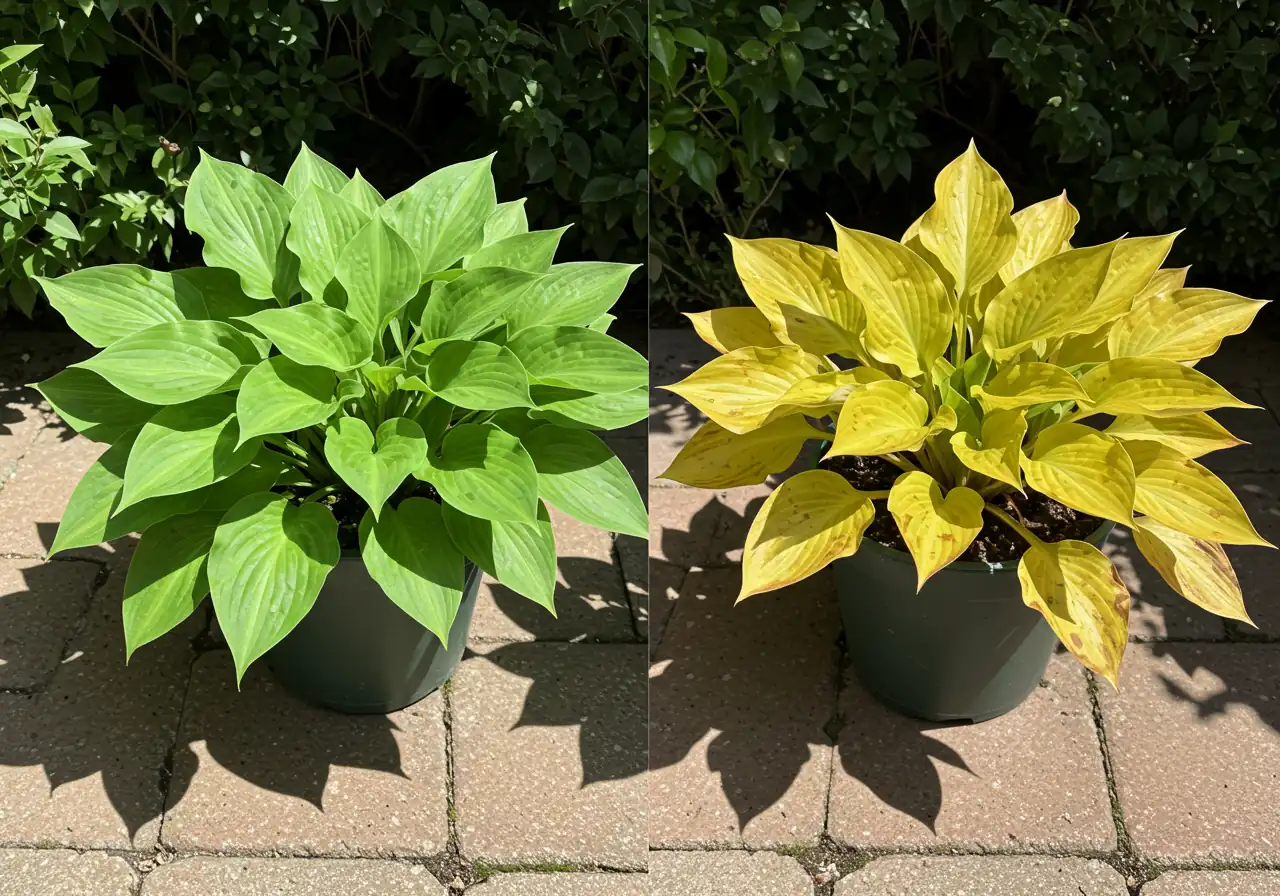
Think about that patch next to your south-facing brick wall. In summer, it's like a tanning bed! While sun-loving plants like lavender or sedum might thrive there, throwing in some shade-preferring Hostas is asking for trouble. You'll likely see scorched leaves, constant wilting, and stunted growth. They're basically screaming for water and relief! This intense heat, especially when reflected off surfaces, dramatically increases moisture evaporation from the soil, making watering a constant battle. Poor plant selection for these hot spots is a common reason gardens struggle. Choosing the right elements during Material Selection for Landscaping Projects can sometimes help mitigate these effects, like using lighter coloured stones that absorb less heat.
Conversely, that perpetually shaded corner under a dense maple tree creates a different challenge. It stays cooler, which can be great for extending the life of spring bulbs. However, it might also be too cool and damp for plants needing good air circulation, potentially leading to fungal issues. If it's dry shade (thanks to the tree roots hogging all the water), finding plants that tolerate both shade *and* dryness can be tricky – ferns might sulk without enough moisture. Established neighbourhoods like Manotick, with their grand, mature trees, often have more pronounced shade microclimates compared to newer areas with less canopy cover.
These variations directly impact plant vitality. Stressed plants are more susceptible to pests and diseases. You might find your hydrangeas wilting dramatically by noon in a sunny spot but looking perky all day just a few yards away in dappled shade. Sometimes, microclimates can even slightly extend a growing season in a sheltered spot or, unfortunately, create frost pockets that nip tender plants early. Managing these effects often involves adjusting care routines or even considering a thorough tidy-up; removing stressed or damaged plants is part of good maintenance, something covered by a Richmond Yard Cleanup Service. Tackling widespread issues might even warrant looking into broader options like a Marionville Property Cleanup Service if things get out of hand across a larger area, or a more focused City Garden Clean Up Service for urban plots facing similar microclimate challenges. Recognizing these impacts helps you work *with* your yard's quirks, not against them, leading to healthier, happier plants. And if managing these varied needs feels overwhelming, exploring professional landscape Services can provide tailored solutions.
Water Wisely: Tailoring Irrigation to Your Mini-Zones
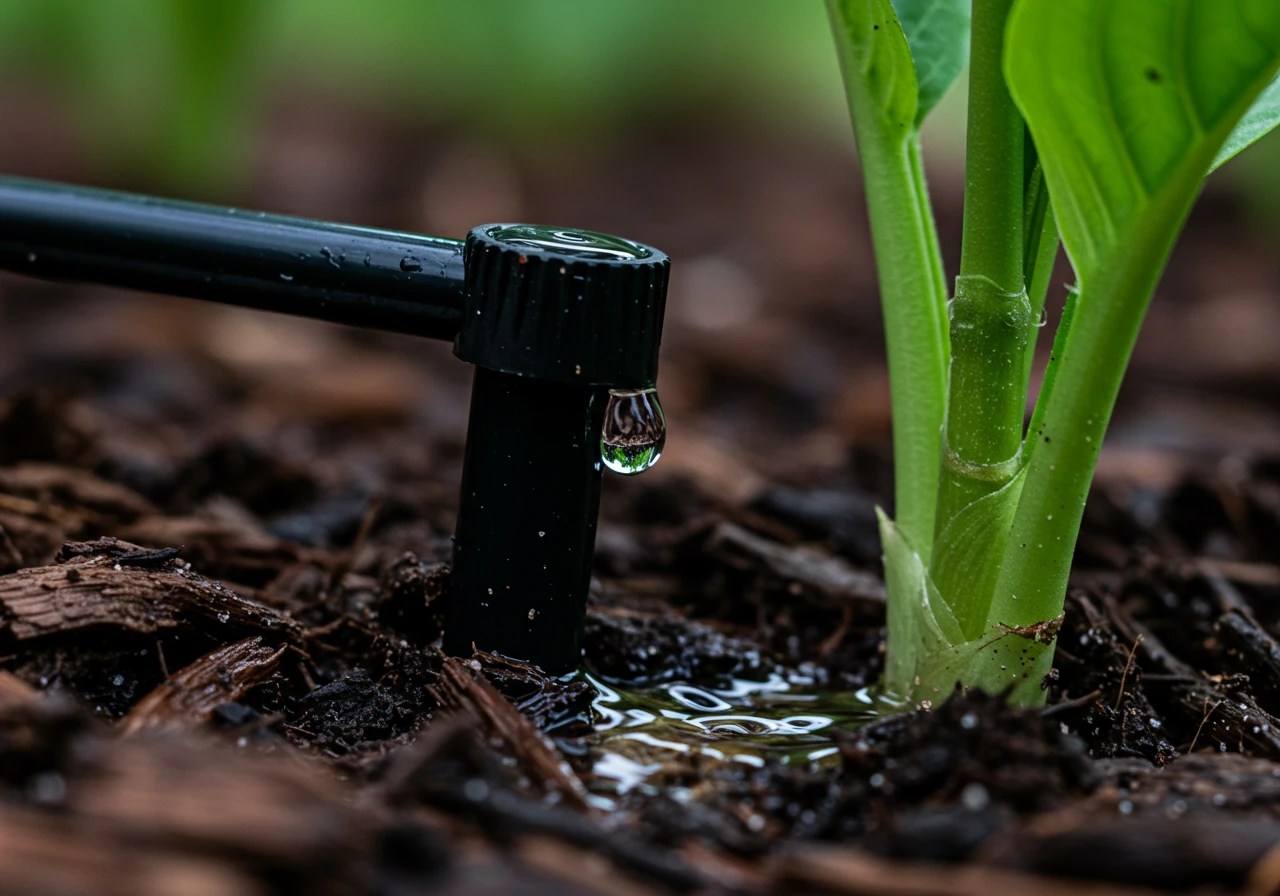
Alright, you've become a microclimate detective – brilliant! Now, let's talk about giving your plants a drink without drowning them or leaving them parched. Just like you wouldn't wear a parka on a beach day, your plants have different thirst levels depending on their location in your yard. Watering everything the same way is like trying to fit a square peg in a round hole – inefficient and often ineffective, especially with Ottawa's typical mix of clay and loam soils that hold water differently. Plus, with potential summer water restrictions (check resources like the City of Ottawa's water regulations), watering wisely is not just good for your plants, it's good for the community and your wallet!
Remember those zones you identified? The hot, sunny spot by the driveway will dry out much faster than the cool, shady corner under the pines. Plants basking in afternoon sun or exposed to drying winds need more frequent watering than those in sheltered, cooler areas. Your plants are great communicators! Watch for signs:
- Wilting leaves (though some plants wilt dramatically in midday heat and recover – check again in the cooler evening).
- Dry, crumbly soil on the surface.
- Lack of new growth or dull-looking foliage.
Forget the old-school sprinkler oscillating wildly, watering the sidewalk as much as your petunias! For targeted, efficient irrigation, consider these methods:
- Drip Irrigation: Delivers water slowly and directly to the plant's root zone. Minimal evaporation, maximum efficiency. Great for garden beds and rows of shrubs.
- Soaker Hoses: These porous hoses "weep" water along their entire length, soaking the soil deeply. Fantastic for established hedges or densely planted beds.
- Hand Watering: Still a great option for containers or hitting specific thirsty plants, ensuring water goes exactly where needed.
These methods reduce water waste significantly compared to overhead sprinklers, which lose a lot to evaporation, especially on windy Ottawa days. Deep, infrequent watering encourages stronger root growth compared to light, frequent sprinkles. Proper watering is a key component of general lawn care and garden health.
The Finger Test: Your Best Moisture Meter
Not sure if it's time to water? Don't guess – test! Here's the foolproof method:
- Stick your finger into the soil near your plants, about 2-3 inches deep (past the mulch layer).
- Feel the soil. Is it cool and moist? Hold off on watering.
- Is it dry and crumbly? Time to give those roots a drink!
For denser clay soils, common around areas like Metcalfe, you might need a small trowel to check, as the surface can bake hard while moisture remains deeper down. Sometimes, improving soil structure after a Metcalf Yard Cleanup Service can make this check easier and improve water penetration.
Your watering routine isn't static. Keep these seasonal adjustments in mind:
- Spring: Cooler temps, more rain usually means less supplemental watering. Focus on new plantings.
- Summer: Peak heat and growth demand the most water, especially during dry spells. Water early morning (before 10 AM is ideal) to minimize evaporation and allow foliage to dry before nightfall.
- Fall: As temperatures cool and growth slows, gradually reduce watering frequency. Ensure evergreens get adequate moisture before winter freeze-up.
Using water wisely helps conserve a precious resource. Collecting rainwater in barrels is another fantastic eco-friendly practice. Remember, healthy soil holds water better, so composting and mulching are key partners in smart watering. Keeping beds clear of water-hogging weeds, perhaps through a general tidy like a City Garden Clean Up Service or even a larger scale Metcalf Property Cleanup Service if needed, also ensures water goes to your desired plants. For broader property needs across different regions, sometimes comprehensive help like a Marionville Yard Cleanup Service might be considered. We value your trust when you use our services or browse our site; you can always review how we handle your information in our Privacy Policy. By tailoring your irrigation to each unique mini-zone, you'll have happier plants and be a water-wise gardening hero!
Smart Watering Strategies
Focus water directly at the root zone using drip irrigation or soaker hoses. Water deeply and less frequently to encourage strong root growth. Early morning watering minimizes evaporation and allows foliage to dry, reducing disease risk. Always check soil moisture before watering, especially in varying microclimates.
Foundation for Resilience
Healthy soil rich in organic matter acts like a sponge, holding moisture and moderating temperature. Apply a 2-4 inch layer of organic mulch (like bark chips) to conserve water, keep roots cool, and suppress weeds. Avoid piling mulch against plant stems. This foundation work is often part of a good property clean up.
Right Plant, Right Place
Match plants to their preferred conditions. Choose sun-loving, drought-tolerant varieties for hot, dry areas (e.g., Sedum, Coneflower). Select shade-tolerant species for cooler, darker spots (e.g., Hosta, Ferns). Consider native plants adapted to local conditions for lower maintenance. Smart choices prevent stress and boost vitality.
The Ground Up: Soil Health and Mulching for Microclimate Management
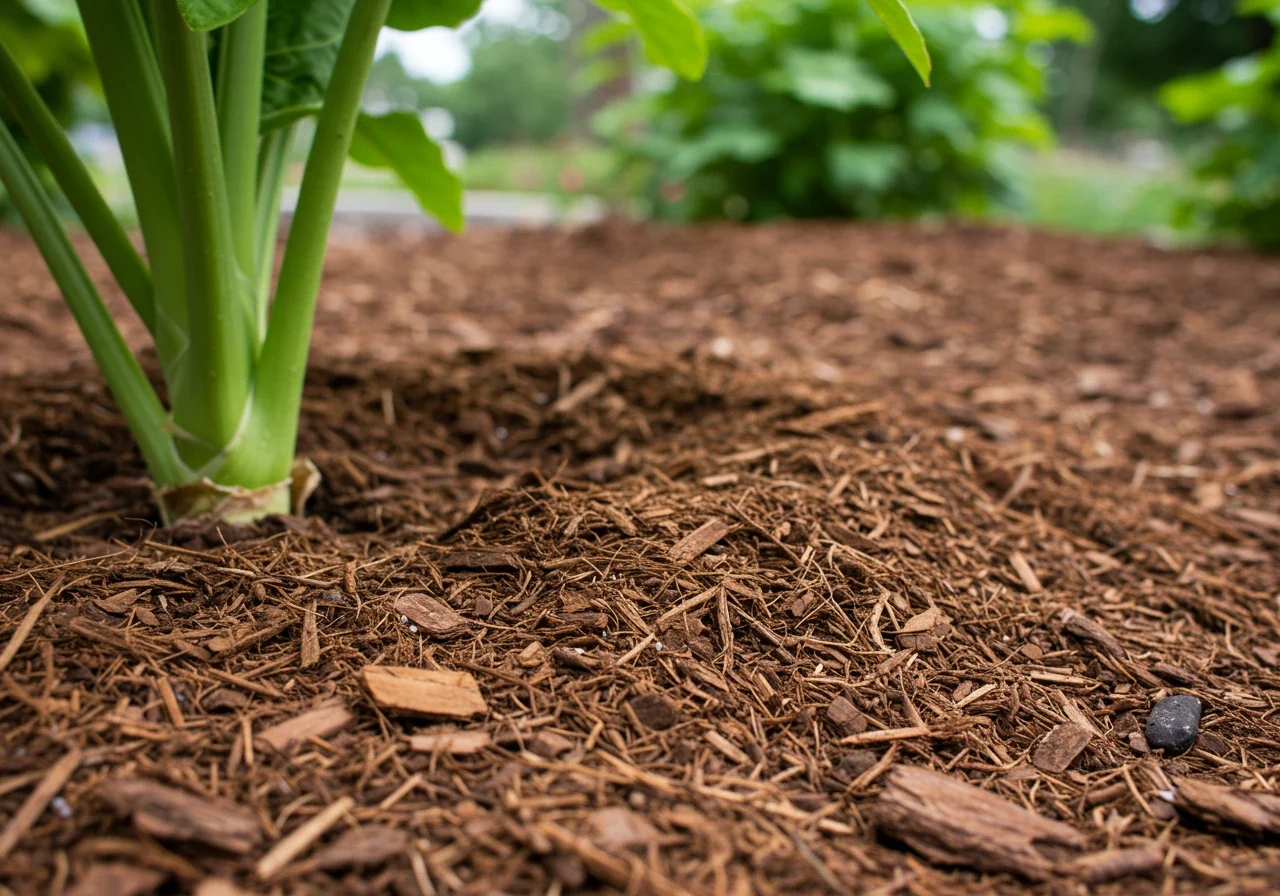
Alright, let's get down to earth – literally! We've talked about identifying those quirky microclimates in your Richmond or Ottawa yard, but how do we actually *manage* their effects? It starts from the ground up with two of your garden's best friends: healthy soil and a good layer of mulch. Think of them as the dynamic duo fighting off the worst of the summer heat and dry spells.
First, let's talk dirt. Healthy soil is the bedrock (pun intended!) of a resilient garden. It acts like a sponge, soaking up water during downpours and releasing it slowly to plant roots when things get dry. It also helps moderate temperature swings, keeping roots cooler when the sun is beating down. Here in the Ottawa area, especially around communities like Greely and Osgoode, we often deal with heavy clay soil. Clay can be nutrient-rich, but it also compacts easily, drains slowly (hello, soggy roots!), and can bake brick-hard in the summer sun. The secret weapon? Organic matter! Adding compost regularly works wonders. It improves drainage in clay, helps sandy soil hold moisture, feeds beneficial soil microbes, and generally gives your soil the structure it needs to buffer plants against microclimate stress. Starting your own compost pile is a fantastic, eco-friendly way to turn kitchen scraps and yard waste into black gold for your garden. Getting beds ready might involve clearing out old debris, a task sometimes handled through comprehensive bed preparation like a Metcalf Yard Cleanup Service if you're dealing with a large or neglected area.
Once your soil is on the path to greatness, it's time to tuck it in with mulch. Mulch is simply a layer of material spread over the soil surface. Its benefits are HUGE for microclimate management:
- Moisture Conservation: It dramatically reduces water evaporation from the soil surface – meaning less watering for you!
- Temperature Regulation: It acts like insulation, keeping the soil cooler in summer and warmer in winter (though our focus here is summer!).
- Weed Suppression: It blocks sunlight, making it harder for pesky weeds to sprout and compete with your plants for water and nutrients.
What kind of mulch should you use? You've got options!
- Organic Mulches: Things like shredded bark, wood chips, straw, or chopped leaves. These break down over time, adding valuable organic matter back into the soil (bonus!). They need replenishing every year or two.
- Inorganic Mulches: Like gravel or decorative stone. These last much longer but don't improve the soil structure. They can also absorb and radiate heat, potentially making a hot microclimate even hotter, so use them thoughtfully.
Applying mulch is easy: Spread a layer 2-4 inches deep over your garden beds, but *don't* pile it right up against plant stems or tree trunks. Leave a little breathing room (an inch or two) to prevent rot and discourage pests. Keeping mulch topped up is a key part of ongoing care, potentially part of a City Garden Maintenance Service plan. For larger properties needing extensive soil amendment or mulching, a broader approach like a City Property Cleanup Service might be necessary to prep the site first.
Healthy soil and a protective layer of mulch work hand-in-hand to create a more stable environment for plant roots, buffering them from the extremes of heat and drought often found in specific yard microclimates. It's a foundational aspect of smart gardening and overall Garden Maintenance. Wondering about the effort or cost involved for your specific yard? Getting a clear idea of costs is easy; feel free to use our form for Estimate Feedback to discuss your soil and mulching needs. Give your soil some love and a cozy mulch blanket – your plants will thank you!
*Illustrative percentages showing potential reduction in evaporation/water need.
Right Plant, Right Place: Strategic Selection for Richmond Gardens
Okay, garden detectives, you've mapped out your Richmond yard's secret hot spots and cool corners. Now for the fun part: matchmaking! Choosing the right plant for the right place is the ultimate secret to a successful, lower-stress garden. It's like setting up your plants on the perfect blind date – you want compatibility! Ignore their needs, and you'll end up with wilting wallflowers or crispy critters.
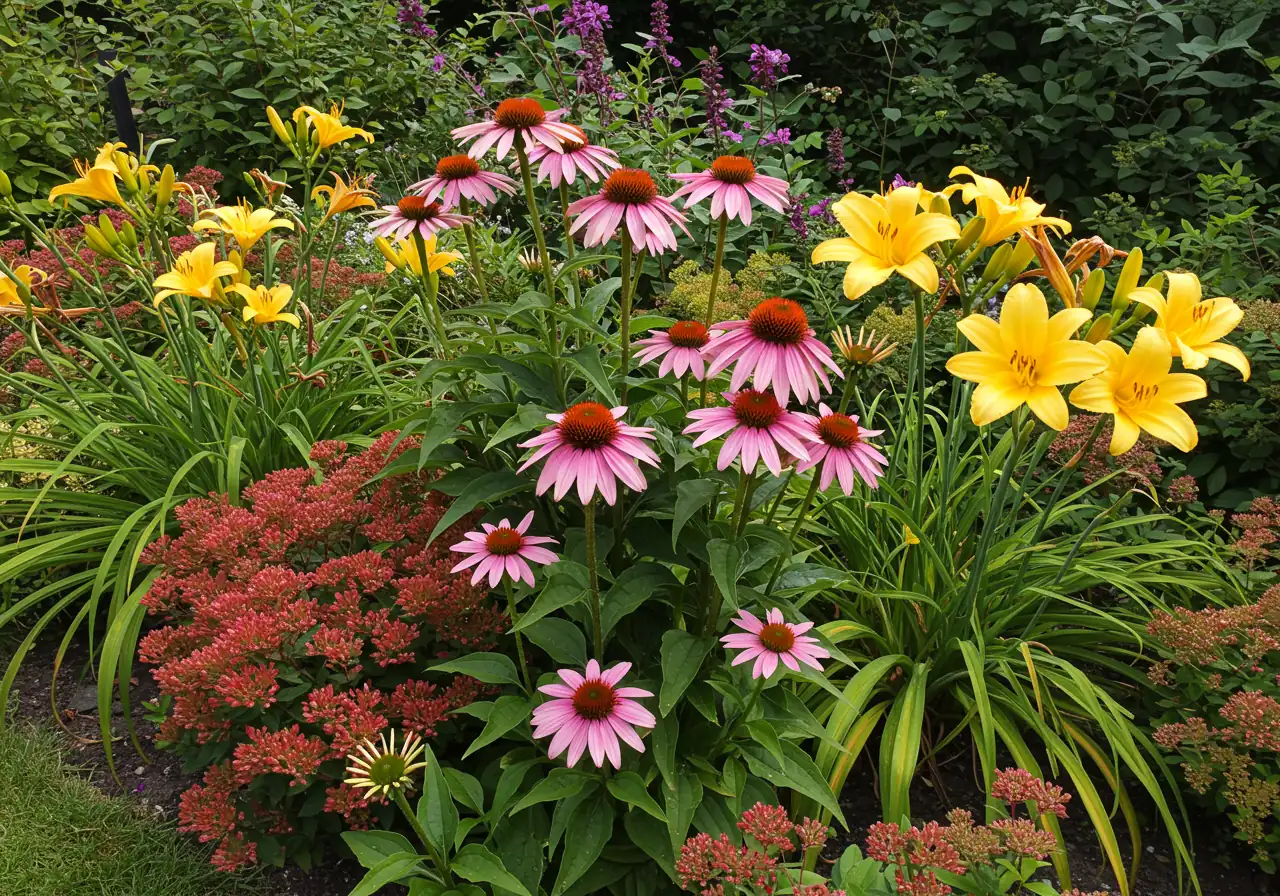
Think about those microclimates. That spot baking in the afternoon sun against a west-facing wall? That's prime real estate for heat-loving superstars. For our Ottawa Zone 5a/5b climate, consider tough cookies like Sedum (Stonecrop), Daylilies, Coneflowers (Echinacea), or Lavender. These plants generally laugh in the face of heat and don't mind if the soil gets a bit dry between waterings. Just ensure they have good drainage – even sun-lovers hate soggy feet! Success here often relies on good ground work; remember that proper soil preparation helps even drought-tolerant plants establish strong roots.
Now, what about that shady nook under the big maple or on the north side of the house? Don't despair – plenty of gorgeous plants prefer cooler conditions. Hostas are classic shade favourites, alongside feathery Astilbe, lush Ferns, and charming Bleeding Hearts. Remember to check if it's dry shade (thanks, tree roots!) or moist shade. Ferns usually need more moisture, while some Hostas are surprisingly drought-tolerant once established. Sometimes, clearing out struggling plants from previous attempts makes way for success; a focused Marionville garden clean up service can provide that fresh start needed for strategic planting in difficult zones.
Did you know plants themselves can help tweak your microclimates? Planting a small tree or larger shrub strategically can create welcome shade for other plants (and maybe your patio!). Dense groundcovers can help keep the soil surface cooler and retain moisture. It's all part of smart landscaping design.
Let's also give a shout-out to native plants! Plants native to our Eastern Ontario region, like those thriving naturally around areas like Kars or Vernon, are already adapted to our climate extremes and soil types. Think Serviceberry, Joe Pye Weed, or Wild Geranium. Local resources like the Fletcher Wildlife Garden or Rideau Valley Conservation Authority often have great info on local native species. They often require less fuss, less water once established, support local wildlife, and contribute beautifully to the local ecosystem. Choosing natives is a fantastic way to ensure resilience and reduce the need for intensive interventions. Consistent upkeep keeps everything looking its best, which is where regular consistent garden maintenance comes in handy. If you're removing unsuitable plants to make way for better choices, a thorough Ottawa yard cleanup service can handle the debris. Maybe even consider sod installation for areas where turf is the best choice.
Quick Plant Selection Cheat Sheet (Zone 5):
- Sun Superstars (Need 6+ hours direct sun):
- Perennials: Sedum 'Autumn Joy', Daylilies (Hemerocallis), Coneflower (Echinacea), Black-Eyed Susan (Rudbeckia hirta), Peonies
- Annuals: Petunias, Marigolds, Zinnias
- Shade Seekers (Tolerate < 4 hours direct sun, or dappled light):
- Perennials: Hostas, Astilbe, Bleeding Heart (Dicentra), Coral Bells (Heuchera), Ferns (various)
- Annuals: Impatiens, Begonias (Wax and Tuberous)
Making smart plant selection choices based on your specific yard conditions is key. It saves water, reduces plant stress, and leads to those satisfying amazing garden transformations we all love to see!
Seasonal Microclimate Care Timeline
- Spr
Spring Awakening
Observe emerging sun/shade patterns. Amend soil with compost. Check drainage in low spots. Apply fresh mulch after soil warms. Monitor new plantings for water needs.
- Sum
Summer Survival
Water deeply based on microclimate needs (use finger test!). Monitor heat stress zones closely. Replenish mulch if needed. Stay vigilant for pests/diseases on stressed plants.
- Fall
Autumn Prep
Gradually reduce watering as temps cool. Ensure evergreens are well-hydrated before freeze-up. Top up mulch for winter insulation. Note areas for plant adjustments next year.
- Win
Winter Watch
Observe snow melt patterns – reveals warmer/cooler spots. Protect sensitive plants in exposed microclimates. Plan spring changes based on observations. Check our terms for winter service details.
Quick Wins: Key Insights for a Thriving Summer Garden
Feeling a bit overwhelmed by the summer heat and your garden's demands? Don't sweat it (too much)! Sometimes, just a few key strategies can make a world of difference between a struggling patch and a thriving oasis. Here are some quick wins – actionable insights pulled from everything we've discussed – to help your Ottawa garden flourish this summer:
- Become a Backyard Observer: Seriously, grab a cool drink and just watch your yard! Note where the sun beats down longest in your Richmond or Nepean landscaping and where shade lingers. Understanding these mini "microclimates" is your secret weapon for smarter gardening. If observation reveals areas truly overwhelmed by neglect or poorly suited plants, sometimes a focused reset, like the kind offered by a thorough Marionville garden clean up service, can provide the blank slate needed for success. Or perhaps a cleanup in Ottawa or Metcalfe is what you need.
- Water with Purpose: Forget blasting everything equally! Stick your finger in the soil – if it's dry a couple of inches down, then water deeply at the base of the plants. Early morning is best. This targeted watering saves water and encourages stronger roots, crucial during our hot spells.
- Embrace the Magic of Mulch: Applying a 2-4 inch layer of organic mulch (like shredded bark) is like giving your soil a protective blanket. It keeps roots cooler, dramatically cuts down on water evaporation, and smothers weeds. It’s one of the simplest, most effective things you can do! For a neat finish and optimal application, consider professional mulching and edging services.
- Play Plant Matchmaker: Put the right plant in the right place! Sun-loving perennials for those hot, sunny spots; shade-tolerant varieties for under trees or north-facing walls. Don't try to force a shade plant to love scorching sun – it rarely ends well! Making smart plant selections tailored to your yard's specific conditions prevents stress and saves effort. If you're redesigning areas, getting help with professional garden bed installations can set your new plants up for long-term health. As with any service, ensure you understand the scope and commitment by reviewing the provider's clear service Terms and Conditions.
- Soil Isn't Just Dirt: Healthy soil is everything! Regularly add compost to improve its structure, whether you have heavy clay near Greely or faster-draining soil elsewhere. Good soil holds moisture better, drains properly, and supports robust plant growth, making plants more resilient to microclimate swings.
Got more questions about tackling your specific garden challenges this summer, or need a hand implementing these tips? Our team is happy to help – feel free to get in touch with our team!
Richmond & Ottawa Garden FAQs: Tackling Your Microclimate Questions
Ah yes, the dreaded "death wall" microclimate! You're definitely not alone; those spots get intense afternoon sun and reflected heat. The key is choosing plants known for their sun tolerance and drought resistance once established. Think tough perennials like Sedum 'Autumn Joy', Coneflowers (Echinacea), Daylilies, Yarrow (Achillea), or ornamental grasses like Feather Reed Grass. Amending the soil with compost helps retain moisture, giving roots a fighting chance. Applying a good layer of mulch is also crucial to keep the soil cooler. If you're setting up a new bed there, considering professional garden installation can ensure proper soil prep and plant choice from the start.
You bet it does! Heavy clay soil, common in areas like Greely and parts of Metcalfe, acts like its own microclimate modifier. It holds water like crazy (leading to soggy roots after rain) but can bake brick-hard and crack when it dries out in the summer heat. This stresses plants significantly. The best long-term solution is consistently adding organic matter – compost, aged manure, chopped leaves. This gradually improves structure, allowing for better drainage *and* moisture retention when needed. Raised beds can also be a great option for immediate improvement. Avoid compacting it by walking on it when wet. It takes persistence, but improving clay soil pays off huge dividends for plant health. Services like Ottawa garden clean up can include soil amendment.
Absolutely! Microclimates definitely influence pest and disease pressure. Plants stressed by too much heat, too little sun, or improper moisture are way more susceptible – like a tired person catching a cold easily. For example, damp, shady spots with poor air circulation can be prime territory for fungal diseases like powdery mildew. Hot, dry areas might see more spider mites on stressed plants. The best defense is a good offense: ensure good plant selection for each spot, improve air circulation with proper spacing and pruning, maintain healthy soil, and water correctly. Healthy, happy plants are naturally more resistant! If you're battling persistent issues, it helps to understand the underlying causes – you can learn more about our team and our approach to holistic garden health.
Great question, and yes, microclimates matter in every yard, regardless of size! Even in a smaller Barrhaven or Nepean yard, you'll have variations. Think about the shade cast by the house or a fence, the heat radiating off a patio or driveway, a damp spot near a downspout, or even how wind funnels between buildings. Containers on a sunny deck create their own intense microclimate, drying out super fast. Understanding these mini-zones helps you place pots effectively, choose the right annuals for a small bed, or figure out why one shrub thrives while its neighbour sulks. It’s all about maximizing success in the space you have. We appreciate questions like these; thank you for reaching out!
Knowing your microclimates is fantastic for water conservation beyond just watering wisely! Use that knowledge for strategic plant selection: put drought-tolerant plants like lavender or sedum in those hot, dry zones so they naturally need less water. Group plants with similar water needs together (hydrozoning) – don't mix thirsty divas with camels! Improve your soil with compost; healthy soil holds moisture much better, reducing runoff and evaporation. And never underestimate mulch – it’s a superstar for reducing water loss from the soil surface. Prepping beds properly for drought-tolerant species, perhaps involving clearing out old water-guzzlers as part of a city yard cleanup service, sets you up for long-term water savings.
Conclusion: Cultivate Your Oasis in Richmond This Summer
So there you have it! Surviving the Richmond summer sizzle isn't about battling your backyard, it's about becoming BFFs with its little quirks – those sneaky microclimates. By playing backyard detective, mastering smart watering techniques, boosting your soil health with goodies like compost, tucking plants in with protective mulch, and making savvy plant selections (no shade lovers baking in the sun!), you can transform tricky spots into thriving scenes.
The reward for your newfound microclimate wisdom? More vibrant plant vitality, less gardening guesswork (goodbye, crispy critters!), potential water savings, and ultimately, your very own beautiful, resilient oasis to kick back and enjoy all summer long, right here near Ottawa. You'll be the envy of the neighbourhood, perhaps even giving folks in Manotick or Barrhaven some garden goals!
Ready to cultivate your personal paradise? Put these tips into action! And if mapping microclimates or implementing the perfect landscaping plan feels a bit daunting, don't sweat it. Our team is passionate about helping Richmond residents create gorgeous, sustainable gardens. Whether you need help with ongoing garden maintenance, smart plant selection and installation, soil improvement, or a complete design tailored to your yard's unique conditions, we're here for you.
Take the first step towards your dream yard today! Visit us online at CleanYards.ca to learn more about our services or give us a call at 613-CLEANUP (613-253-2687) to chat about how we can bring your garden vision to life.

